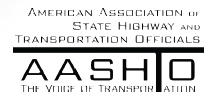Domestic Scan of Work Zone Assessment, Data Collection and Performance Measurement PracticesWork Zone Mobility and Safety Program Web Site NCHRP 20-68A US Domestic Scan ProgramScan 08-04
Pub. No. FHWA-HOP-11-021 March 2011 
BackgroundTransportation agencies across the nation regularly implement strategies to alleviate congestion and improve safety in work zones. To help agencies improve on these efforts over time, the Work Zone Safety and Mobility Rule requires agencies to use safety and operational data to manage impacts and assess performance on individual projects and overall. Agencies need to collect and analyze safety and operational data to have the necessary information to better understand the performance of work zones and evaluate the effectiveness of work zone management strategies. Metrics such as queues, delay, and crashes can help agencies improve their policies and processes to better address work zone impacts - and thereby reduce work zone congestion and improve safety. Agencies could benefit from information on how their peers develop measures, collect data, and evaluate work zone performance. A 2010 Domestic Scan of best practices in work zone assessment, data collection, and performance measurement documented practices that are being employed to ensure safety and minimize congestion in work zones. The purpose of this brochure is to share information on practices found during the scan and provide the key findings, challenges, and recommendations from the scan. Performance MeasuresWork Zone Safety Performance Measures Currently in Use
Work Zone Mobility and Operational Performance Measures Currently in Use
Data SourcesSources of Work Zone Safety Data
Some agencies require work zone monitoring in Transportation Management Plans. The tendency is to use performance measures mainly on large-scale projects. Some agencies use technology to capture work zone performance information, such as through traffic management centers, temporary ITS, or third party data suppliers while others use customer surveys and qualitative observations to assess work zone performance. Key Findings
Agency ChallengesSome challenges that agencies face include:
DOTs Scanned:
The Domestic ScanThe scan team identified four main topics to target:
Scan MethodologyA desk scan, performed in the fall of 2009, identified agencies that had implemented or were implementing practices in each of the main topic areas. The scan team identified a total of 15 agencies and followed up with each to gather additional information for the scan. A combination of on-site interviews, reverse scans (where the agency travels to meet with the scan team at a location), and webinars/videoconferences were employed to gather the desired data from agencies. The scanning effort was completed over two weeks in March 2010. For Further InformationThe scan final report, "Best Practices In Work Zone Assessment, Data Collection, and Performance Evaluation, Scan 08-04" is available online at http://onlinepubs.trb.org/onlinepubs/nchrp/docs/NCHRP20-68A_08-04.pdf. The Scan Team
|
|
United States Department of Transportation - Federal Highway Administration |
||